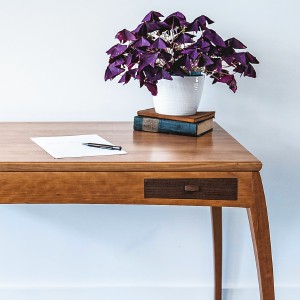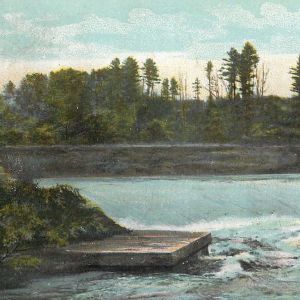Scarecrows have long history
| Published: 10-06-2016 4:07 PM |
What would autumn be without an abundance of scarecrows, pumpkins and bundled corn stalks? The scarecrow is one of the most familiar figures of our rural landscape, not only in the United States but throughout Europe and many other countries of the world. Scarecrows have been in existence for more than 3,000 years! Who knew?
A scarecrow or hay-man is a decoy or mannequin in the shape of a human, Wikipedia explains. It is usually dressed in old clothes and placed in open fields to discourage birds such as crows or sparrows from disturbing and feeding on recently cast seed and growing crops.
It was not always this way; the Egyptians used the first scarecrows in recorded history to protect their vast wheat fields along the Nile River from flocks of quail. Their version of the scarecrow was a wooden frame covered with nets. The farmers would hide in the fields and when the quail approached they would scare them into the nets. That would not only save their crop from devastation but caught quail for dinner that night.
About 2,500 B.C., Greek farmers carved wooden scarecrows in the image of Priapus, the son of Dionysus and Aphrodite, creating a “scarecrow” that was supposedly ugly enough to scare the birds away from their vineyards, ensuring a good harvest.
Later the Romans copied the Greek scarecrow custom and introduced it to Europe when their armies marched through.
About the same time, Japanese farmers started making their version of the scarecrow to protect rice fields. Their scarecrows were shaped like people, dressed in raincoats and straw hats.
In Germany, scarecrows were originally wooden, made to resemble witches, and in medieval Britain, young boys and girls were used as live scarecrows or “bird scarers” where they would patrol the fields of crops and scare away the birds by waving their arms or throwing stones. This eventually led to farmers stuffing sacks with straw and using painted gourds to make heads and faces to create “straw men” which they would then lean up against a pole to scare away the birds.
Article continues after...
Yesterday's Most Read Articles
 Mother of two convicted of negligent homicide in fatal Loudon crash released on parole
Mother of two convicted of negligent homicide in fatal Loudon crash released on parole
 Students’ first glimpse of new Allenstown school draws awe
Students’ first glimpse of new Allenstown school draws awe
 Pay-by-bag works for most communities, but not Hopkinton
Pay-by-bag works for most communities, but not Hopkinton
 Regal Theater in Concord is closing Thursday
Regal Theater in Concord is closing Thursday
 With less than three months left, Concord Casino hasn’t found a buyer
With less than three months left, Concord Casino hasn’t found a buyer
 ‘Bridging the gap’: Phenix Hall pitch to soften downtown height rules moves forward
‘Bridging the gap’: Phenix Hall pitch to soften downtown height rules moves forward
Meantime in the United States, immigrant German farmers began making human-like scarecrows called “bootsamon” or “bogeyman” that they would dress up in old clothes stuffed with straw with the proverbial red bandana tied around their neck.
While scarecrows of one kind or another are still abundantly used today as “decoys” to protect gardens from the smallest vegetable patch to open fields of produce, as a population, we mostly enjoy scarecrows dotting our landscapes as decoration during the autumnal season.
Don’t scarecrows just make you smile? Whether they are scary-looking, childlike or funny, you can’t help but think about the fun someone had creating this delightful effigy to share with others. So stop and see the scarecrows when you are out and about this fall – take a photo or two to share with others. Or how about making one of your own?
If you make your own, let your imagination wander; it’s your scarecrow.
Materials can be simple, but they should be sturdy. Remember that your scarecrow will need to stand up to the elements of sun, wind and rain. The frame can be a cross-shaped structure about 4 to 5 feet wide (for the arm spread) by 6 to 8 feet tall or whatever height you want your scarecrow to be. (Don’t forget to allow for the several inches that the wood piece or pole will be inserted into the ground). Use your imagination and recycle some PVC pipe or a discarded garden trellis to create your frame.
Fill an old flannel shirt and pants with straw, hay, grass clippings or plastic bags – whatever is available to make the body, arms and legs of your scarecrow. Be sure to cinch off the ankles and wrists of the clothing with garden twin to hold in the stuffing.
For a “lady scarecrow,” use a colorful old dress, stapling the hem once the skirt is filled with your choice of stuffing material. Or simply add an apron, with straw stuffed in the pockets, of course.
Use a pumpkin, real or plastic, for the scarecrow’s head or perhaps an overturned gallon milk jug. For fun, add a colorful hat for a topper! Wigs are fun, too, like a mop head. Don’t forget to give your scarecrow some personality by giving them a face. Paint it on or hot glue pinecones, acorns or leaves to form the eyes, nose and mouth. Your scarecrow’s facial expression can be sweet, funny, scary or just plain hideous – your call.
Attach the scarecrow to the frame by stapling it, tying it or nailing it – whatever works. You can also use just a sturdy pole to slide up the scarecrow’s back, through the stuffing, attaching it to the pole so it won’t slide down.
Scarecrows can also be made to sit in chairs, not requiring a frame of any kind. Just be sure to tie the body and limbs to its perch so that it doesn’t end up in your neighbor’s yard with the first good wind.
Enjoy your scarecrow throughout the fall season and if it is still in good shape come winter, store it in your garage or basement to “rest” over the winter before resuming its field or lawn duty next spring.
(Some content shared by Kathy Warnes, kathywarnes@gmail.com, in “Scarecrows Historically Speaking.” Joyce Kimball is a member of the Bow Garden Club and a Master Gardener.)


 NH Furniture Masters present new member show this spring
NH Furniture Masters present new member show this spring Sunapee Kearsarge Intercommunity Theater presents ‘Olympus On My Mind’ in April
Sunapee Kearsarge Intercommunity Theater presents ‘Olympus On My Mind’ in April Vintage Views: The greatest factory that never was
Vintage Views: The greatest factory that never was Inspired by Robert Frost, New Hampshire Poet Laureate Jennifer Militello has achieved her childhood dreams
Inspired by Robert Frost, New Hampshire Poet Laureate Jennifer Militello has achieved her childhood dreams
